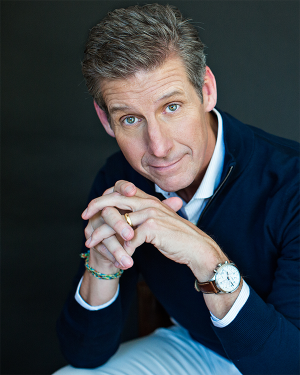‘Embedded giving’ good for the taking
TEXT OF INTERVIEW
KAI RYSSDAL: We’ve all got a lot going on this time of year — making holiday plans and trying to figure out what to buy for which relative. It’s also when many of us give in a different way as we make our annual contributions to our favorite causes. We’re going to spend some time this week on philanthropy, some of the trends and new-ish developments, and what you really get when you give.
We’ll start today with that giving, and how charities are making it easier than ever to donate. You can drop a dollar at the checkout stand or round up your online purchase to the nearest buck, and donate the difference. It sounds small, but those nickels and dimes add up in the end. It’s a concept philanthropy consultant Lucy Bernholz calls “embedded giving.”
LUCY BERNHOLZ: Think about the products that exist just to raise money for charities. So all of Newman’s Own products and the product Red Line, there’s that kind. That’s kind of the product philanthropy.
RYSSDAL: Um hum.
BERNHOLZ: The other kind of embedded giving is when you have the opportunity to make some change with your change. So you bring your own grocery bag, donate your nickel to a non-profit at the grocery store. That’s that kind. And then the third kind is when you’re redirecting other people’s money. This is the kind that’s growing fastest. You think about the Working Assets telephone model where if you use that service some of your money goes to charity at the end of the year, or there’s an increasing number of search engines that allow you to do your regular searching on the Internet, and some of the advertising revenue will go to a good cause.
RYSSDAL: Sounds like a pretty disparate revenue stream for charity at large. Is there anyway to account sort of for how much money is involved here?
BERNHOLZ: Well that’s the big question Kai. We’ve got $300 billion a year in charitable giving in the U.S., and this kind of giving seems to be everywhere. You can go out in your average day and you’ll probably have four, five opportunities to do some giving this way, but nobody seems to be counting it.
RYSSDAL: If it’s not getting counted then how do we know that it’s all going to the purpose for which it was intended. I’m not worried about my nickel at the grocery store so much, but you know, I mean this money does add up over time.
BERNHOLZ: Well I’ll tell you what my concern is. The fastest growing part of this, as far as I can tell, are like I mentioned, the online search engines where you can do your regular business and some of your money will be redirected to what the sites clearly mark as “a good cause.” Now here’s the thing. I can define my shoe budget as a good cause.
RYSSDAL: Right.
BERNHOLZ: Just as you can define funding for Juvenile Diabetes as a good cause, and on some of those websites there’s no distinction made. Now they’re very up front about that, but I’m not so sure too many of us pay that much attention to the fine print when we’re doing our searching, and if you think you’re giving this money to charity and should you decide at the end of the year you’d like to try to account for your own contributions, you’re not going to be able to.
RYSSDAL: Yeah. Which has tax implications. Right?
BERNHOLZ: That’s right. We’re losing all of this as part of what we’re counting in the non-taxable charitable giving. The other big question that I would raise is: is this going to cause donor fatigue? If I’m out there doing my normal shopping and I give a nickel at the coffee store and a dollar at the drug store and a dollar outside the grocery store, when I sit down in the evening and look at all that direct mail I’ve got from non-profits, I might just feel like hey wait a minute, I did my giving already.
RYSSDAL: Alright so let me ask you this. At the end of the day then, do you not give the buck for breast cancer research at checkout, and do you not click on the thing on the web?
BERNHOLZ: Well I don’t use the embedded giving search engines. Just like you I think the Internet just is a little too, takes too much of my work to figure out if all of those are legit. Uh, when I’m face to face with a cashier at the Safeway and she asks me to give to breast cancer research sometimes I give and sometimes I don’t.
RYSSDAL: Yeah. Me too actually.
BERNHOLZ: Lucy Bernholz is the president of Blueprint Research and Design. It’s a consulting firm for philanthropic institutions, individuals too. Lucy thanks a lot for your time.
RYSSDAL: My pleasure Kai. Thanks for having me.
There’s a lot happening in the world. Through it all, Marketplace is here for you.
You rely on Marketplace to break down the world’s events and tell you how it affects you in a fact-based, approachable way. We rely on your financial support to keep making that possible.
Your donation today powers the independent journalism that you rely on. For just $5/month, you can help sustain Marketplace so we can keep reporting on the things that matter to you.

















